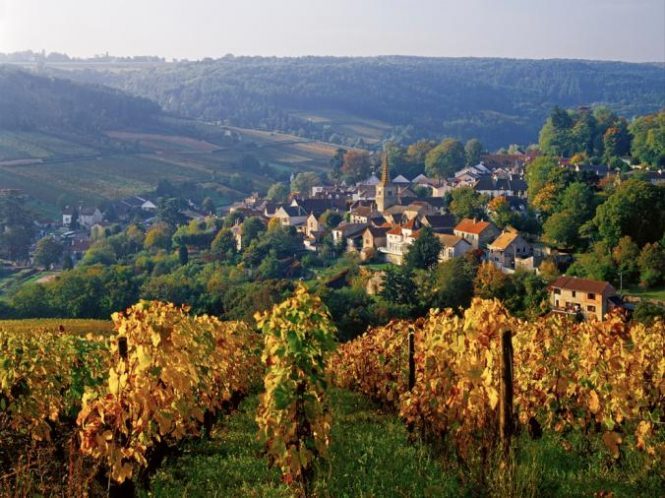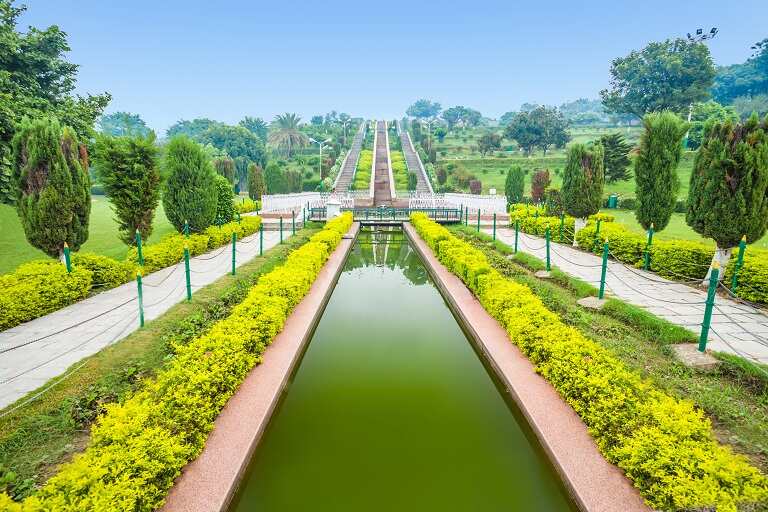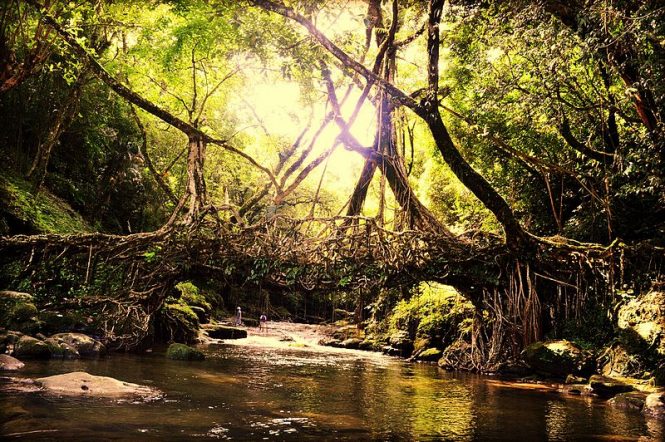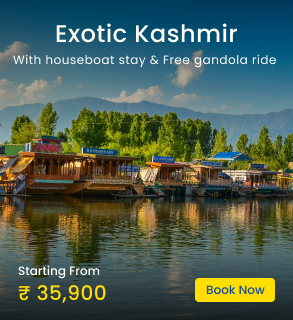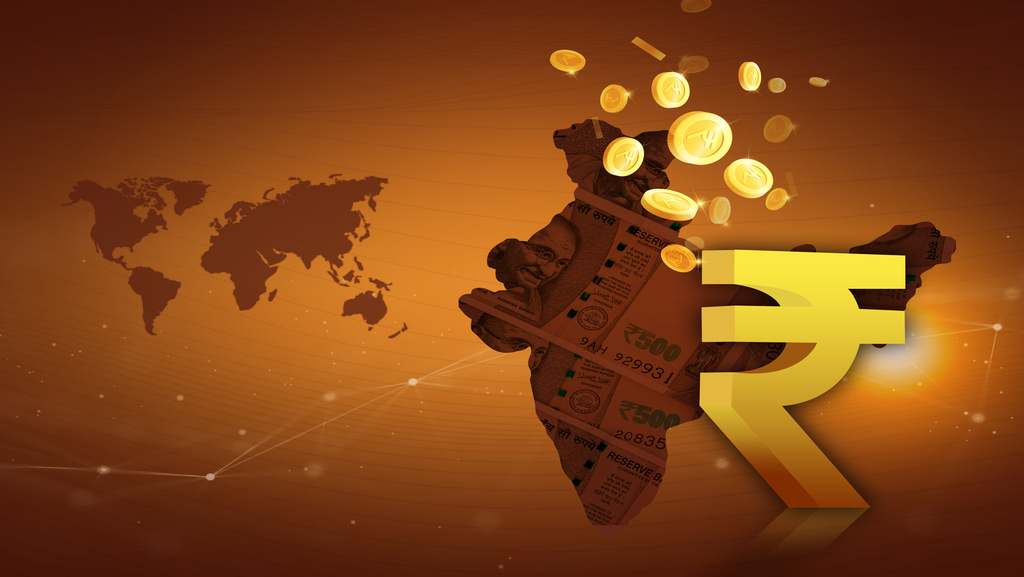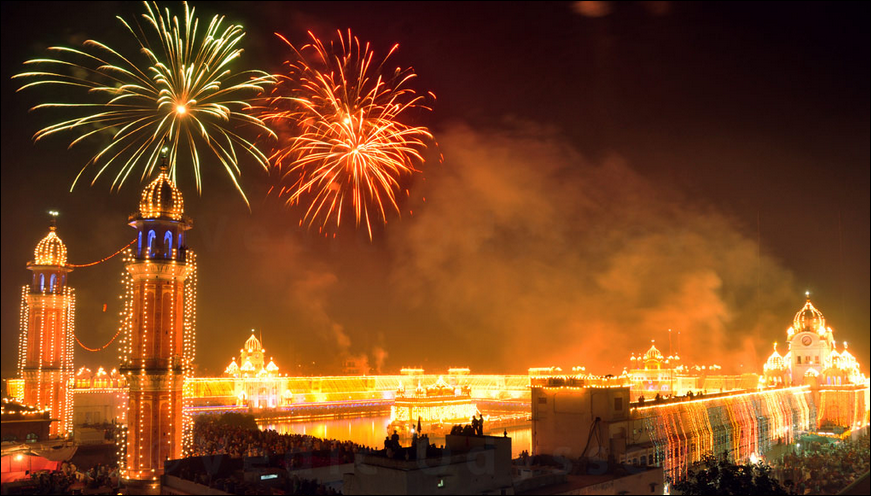
India: A Heady Potpourri of Festivals and Celebrations
Table of contents

India’s delightful customs and exotic traditions need no introduction. For years now, the world has been mesmerized by the amazing cultures of the nation. Is it any wonder that tourists continually make a beeline to the Indian peninsula for a first-hand feel of the many customs that adorn the nation?
In keeping with the ancient adage, ‘atithi devo bhava’, which means guests are like gods, Indians too spare no effort in making guests feel welcome to their homeland. And an excellent way of expressing their delight at having visitors is the numerous festivals and cultural events that are organized throughout the year. From traditional arts and crafts, to authentic cuisines, to natural phenomenon, India opens its doorways to visitors and welcomes them into their festivities and hearts.
Here is a curated list of some of the most spectacular festivals that await you in India in 2019.
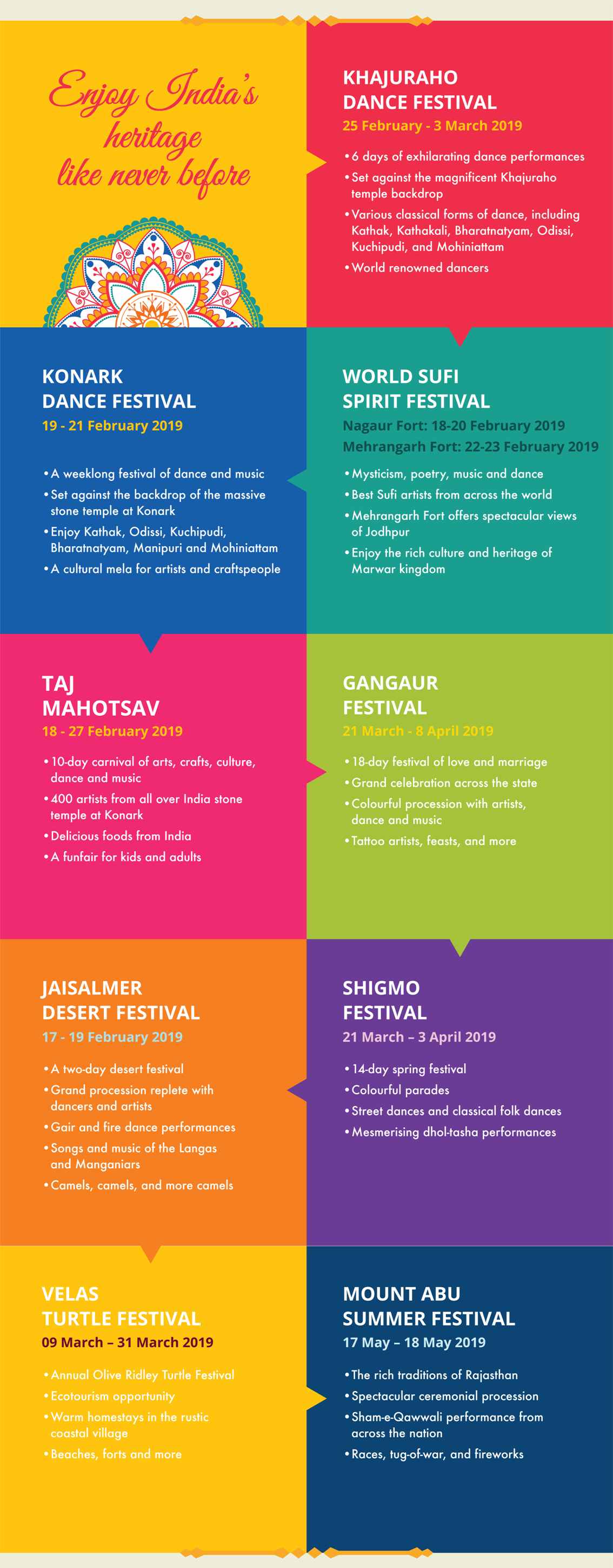
1. Khajuraho Dance Festival
Where the past and present come together
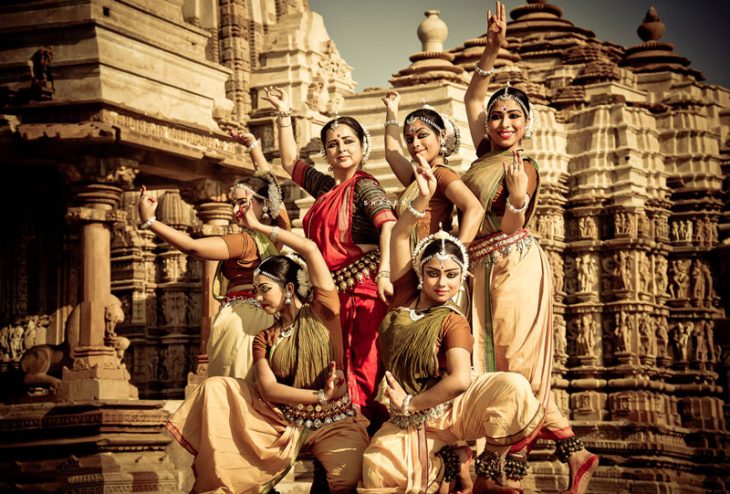
25 February – 3 March 2019
Since 2002, the magnificently lit Khajuraho Temple in the Chhatarpur district of Madhya Pradesh has been the fitting backdrop for a mesmerising dance and culture program that showcases the richness of India’s various dance forms.
That Khajuraho, a UNESCO world heritage site, should be the location of this festival is no coincidence. Since time immemorial, dance has been celebrated in Hindu mythology and originally, temples have been the centre for dance and arts. This group of Hindu and Jain temples dates back to between 950 and 1050 AD, when they were built by the Chandela Dynasty. Each temple is an architectural wonder and demonstrates the beauty of the human form through various sculptures and dance depictions that decorate the walls and pillars of all the temples.
The human form finds expression through dance as well, and for 6 days, the audience at the Khajuraho Dance Festival will be enthralled by the various classical forms of dance, including Kathak, Kathakali, Bharatnatyam, Odissi, Kuchipudi, and Mohiniattam. In the last few years, modern Indian dance forms have also made their debut at the festival.
This is a whirlwind of sounds and sights: the strains of the flute and tanpura, and the rhythmic beats of the tabla and mridangam are the perfect complement to the ghungroo of the dancers.
World-renowned dancers, each an expert in the field, are invited specifically for the event and every single one of them gives the performance of a lifetime to the gathered audience. The dances are performed in the open, usually before the Chitragupta Temple, a shrine dedicated to Surya, the Sun god, and the Vishvanath Temple, dedicated to Lord Shiva. Besides honouring the dance forms, the festival is also another way of paying homage to the many skilled artisans who brought Khajuraho to life with their exquisite carvings, countless centuries ago. It is this art that has stood the test of time and continues to draw visitors from around the world.
2. Konark Dance Festival
A global platform for Indian dance and culture
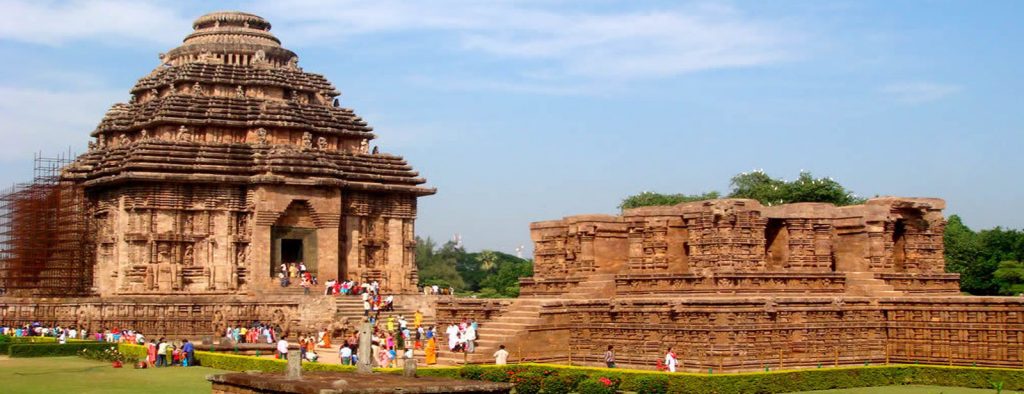
19 – 21 February 2019
The Sun Temple at Konark – a massive stone chariot drawn by seven horses – is a shrine to Surya, the sun god. This magnificent location is the site for the Konark Dance Festival, an annual celebration of classical dance and music. Dance and music have always been an integral part of Hindu culture. In fact, temples themselves were centres for dance and music, each with their own traditional schools of dance and drama.
The Konark Dance and Music Festival started in 1986 and since then, it has attracted art connoisseurs from all corners of the world. The sole aim of the festival is to create an international platform for the many dance forms of India. Over the years, the festival has established its unique identity and many eminent artistes of national and international repute are eager to participate and perform in it. Some of the art forms that one can expect to enjoy include Kathak, Odissi, Kuchipudi, Bharatnatyam, Manipuri and Mohiniattam, along with many other classical and folk dances.
The stage is set, and the atmosphere soon fills with the sounds of the ghungroo, accompanied by the flute and the pakhavaj, a two-headed traditional drum from India. The temple is lit up beautifully and it is immediately transformed from a religious monument into a place that worships art and culture. The atmosphere is magical and offers the audience a chance to lose themselves in the ancient culture of India.
The weeklong festival isn’t restricted to dance alone. A cultural mela is also organized where traditional craftspeople display their arts and crafts. Audiences can watch these artisans create beautiful artefacts all in one place and purchase authentic traditional artefacts, at reasonable rates. Also, visit any of the gourmet stalls that serve you delicious Indian cuisine and complete your Indian cultural experience.
3. World Sufi Spirit Festival
Spirituality is music, and music is spirituality
Nagaur Fort – 18-20 February 2019; Mehrangarh Fort – 22-23 February 2019
If spirituality and a desire to connect with yourself beckons, then the World Sufi Spirit Festival is where you should head to, this February. This festival is a gathering of some of the best artists from India and across the world. The melding of music and spirituality transcends religion and goes beyond the rituals of worship, transporting you to a whole new world.
It is a magical combination of poetry, music and dance that the artists weave together to keep their audience enthralled for the two day festival. The first round of the festival will be held at Nagaur Fort, and then it will move to Mehrangarh Fort, giving the audience a breath-taking view of the city of Jodhpur. Get ready for an unforgettable experience as you allow the music, poetry and dance to take over entirely. The festival at Nagaur is only for resident guests; however, the one at Mehrangarh is open to all. Book your spot at the earliest, as the popular festival is quickly sold out.
The city of Jodhpur offers you a rich experience and a peek into the wealthy Marwar kingdom. While you wait for the Sufi artists to begin, you can spend half a day walking through the bazaars and the many palaces that dot the city. The Mehrangarh Fort itself is a towering edifice that looks over the city. The largest and one of the best maintained forts in the country, it is the perfect backdrop for the Sufi Festival.
The festival begins early in the morning and continues till late into the night. Each artist will capture your attention and keep you enthralled throughout the day. Head back to your hotel for the night tired, yet heady, dreaming of another day of music to come. Do not miss the Dawn Concert that creates an enchanting environment with the rising sun complementing the mellifluous strains of the skilled artists.
4. Taj Mahotsav – One of the popular festivals in India
10 days of India, in one location
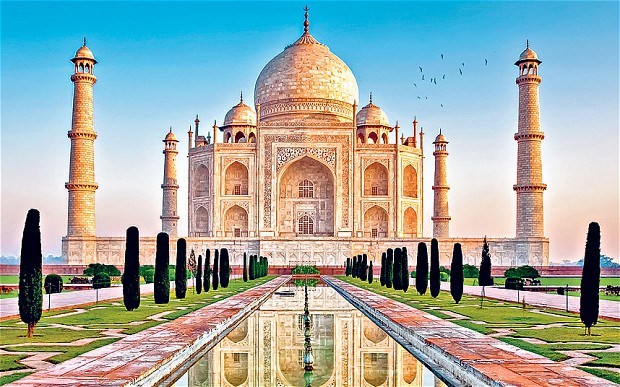
18 – 27 February 2019
Taj Mahal, one of the Seven Wonders of the World, attracts tourists from all corners of India and the world all year around. The month of February, however, gives visitors another reason to make their way to this glorious edifice of love. The Taj Mahotsav is a vibrant, 10-day long carnival of arts, crafts, cuisines, cultures, dance and music of India. To catch a glimpse, or to spend hours at the carnival, head over to Shilpgram, near the Eastern Gate of Taj Mahal.
The Taj Mahotsav was first organized in 1992 and its magnificence has only grown ever since. The festival offers the artisans a platform to showcase their skills and it also presents an opportunity for visitors to collect authentic, traditional crafts at reasonable prices.
Nearly 400 craftsmen and artists from various parts of the country gather here to display their art to true connoisseurs. From wood, stone and marble carvings, cane and bamboo artefacts, papier mache objects, brass ware and pottery, to zardozi, chikan work, silk, kantha and zari, handmade shawls and carpets to hand printing, visitors will be spoiled for choice.
Besides the skilled craft, visitors to the Taj Mahotsav can also experience the rich and majestic traditional performances by artistes from every corner of India. The poignant ballads, the expert classical and semi-classical dances and the accomplished musicians will leave the audience asking for more. Join the performers as they engage you with moves that have been perfected over centuries of dance and music.
If you enjoy tasting new cuisines, then the Taj Mahotsav will not disappoint. This is the best place to savour delicious traditional food from all corners of India, prepared by practiced chefs – exponents of the fine art of culinary delights.
The last offering of the carnival is the fun fair that appeals to kids and adults alike. Roller-coaster rides, merry-go-rounds, and the Ferris Wheel are a few activities to look forward to.
Also Read : Taj Mahotsav 2019 – Where India Comes Together
5. Gangaur Festival
A celebration of love, marriage and women power

21 March – 8 April 2019
The 18-day Gangaur Festival is, truly speaking, a festival for the women of Rajasthan. A celebration of love and marriage, it is dedicated to Goddess Gauri, also known as Parvati, Lord Shiva’s wife.
Gangaur derives its name from Gan, Shiva and Gauri, Parvati, and it signifies their togetherness. The story goes that Shiva was impressed with Parvati’s meditation and devotion and agreed to marry her. After the marriage, she went back to her parental home and stayed there for 18 days, blessing her friends with marriage and a blissful life too. When she was ready to go home, her parents gave her a lavish send off and Shiva came down to earth to escort her home.
In today’s time, the festival sees the women of Rajasthan dress up in all their finery and traditional attire. They pray to Shiva for the health and welfare of their partner every morning and evening, for 18 days. Married women fast on all days of the festival, while unmarried women are permitted one meal a day. Houses are decorated with colourful pots, and small idols of Shiva and Parvati are brought home, placed in a wicker basket filled with flowers and grass, and kept in a position of reverence.
The festival is celebrated in grand ways across the state, but for the best experience, you must visit and spend a few days in Jaipur, Udaipur, Jodhpur, Jaisalmer, Bikaner, and Nathdwara (near Udaipur) each. The highlight of the festival in each location is a colourful procession on the last day with artists, performers, traditional musicians, dance and of course, the beautifully clad women of Rajasthan making their way through the streets. Women can get their hands and feet adorned with myrtle paste for a temporary tattoo.
To understand the rituals of the festival better, you must visit the temples in the cities during your stay. Do participate in the processions and experience the local traditions from up close. Elaborate feasts are held at various spots across the cities, where you can sample the delicious local cuisine. Do not pass up a chance to taste the sweets which often vary from each location.
6. Jaisalmer Desert Festival
A celebration of centuries of festivities

17 – 19 February 2019
The Thar Desert comes alive with the sounds, colours and customs of Jaisalmer in the month of February every year. The unspoiled pristine sands of Thar make the perfect backdrop for a cultural festival that traces its origins back to the late 12th century. Legend goes that Lord Krishna had prophesied that a Yadav leader would establish a kingdom on Trikuta Hill. When Rawal Jaiswal set up his kingdom in Jaisalmer in 1196, the people organized massive celebrations in the kingdom. The celebrations turned into an annual festival and today, centuries later, has acquired international acclaim.
The two-day festival begins with a grand procession that starts from the Jaisalmer Fort and winds its way along the city to culminate at Shadid Poonam Singh Stadium. All along, the locals participate in the procession dressed in their bright traditional costumes, dancing and singing ballads about the great wars fought and the many brave warriors and their tragic tales.
Tourists are mesmerized by the Gair and the fire dance that are known to be the highlights of this desert festival. Local nomads, called Kalabaz or Nats, enthral the audience with their impossible gymnastic acts. As the sun slowly drops below the dunes, it is time for the Langhas and Manganiars to bring out their instruments and enthral listeners with their folk ballads and musical abilities.
It’s not all song and dance at the Jaisalmer Desert Festival. Here, you will spot rare competitions such as camel polo, camel races, unbelievable gymnastic stunts on camel back and camel formation dancing as well. On the lighter side are fun events like tug-of-war, turban tying competitions, Maru-Shri (Mr. Desert competition) and truly delightful longest moustache competition. The festival ends with a Rajasthani folk concert followed by an Air Force display. Your last memory of the festival will be a view of the Jaisalmer Fort against a full moon night.
7. Shigmo Festival, Amongst popular festivals in India
When in Goa, celebrate like the Goans do
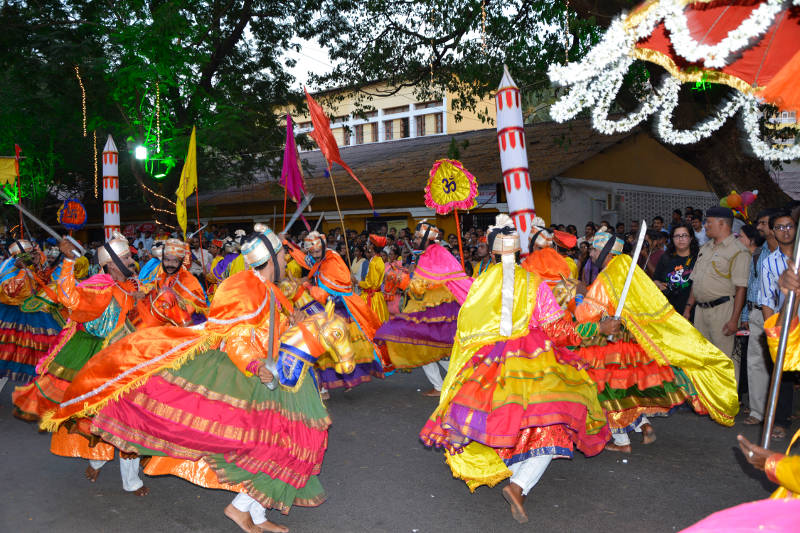
21 March – 3 April 2019
Every March, the streets of Goa explode with the celebration of the Shigmo Festival. This 14-day spring festival is celebrated by the Konkani populace that resides in Goa. As is typical of Goans, this festival too is replete with pomp and splendour.
There are several stories surrounding the actual origins of the festival. The word itself is a Konkani term that has been derived from the Prakrit word “Suggimaho’. One of the legends attributes the origins of the festival to the story of Hollika, aunt of Prahlad, who was burnt to death for trying to stop her nephew from uttering the name of the lord. Another credits the origin to celebrate the death of Putana by Lord Krishna. Either way, the generous celebrations are a must-visit for any visitor.
There are two varieties of the festival – the DhaktoShigmo, celebrated by the rural population and farmers, and the VhadloShigmo – which is bigger and celebrated by all. The celebration is a way to indicate the end of winter and to welcome spring, the season of new life. The 14 days are enjoyed with immense fanfare and merriment. The festival will showcase the influence of Hindu traditions on Goanese mythology.
The festival could be called a mélange of Holi, the festival of colours, and a typical town carnival. The highlight of the celebration is the many spectacular parades that wind through the streets of Goa. Watch as groups of skilled street dancers and traditional folk dancers make their way while enthralling audiences. These are accompanied by the sounds of the dhol-tasha, and songs. Elaborately built floats, each depicting various scenes from regional mythology, are one of the biggest attractions in the parades. Keep your camera ready as this colourful pageant passes you by. It’s a splendid opportunity for the shutterbug in you.
Suggested Read : Top Ten places to celebrate Holi in India
8. Velas Turtle Festival
A celebration of life, as it begins
09 – 31 March 2019
Velas, a small coastal village in Divegar, gets ready to welcome tourists to its annual Turtle Festival, where hundreds of baby Olive Ridley turtles hatch and take their first tentative steps of life towards the sea. The experience is enthralling and provides a great ecotourism opportunity to the village, attracting a countless number of visitors from Mumbai, Pune and several other parts of the country. Whip out your camera and get ready to capture some truly amazing shots as the first steps of life occur in front of your eyes.
The Olive Ridley turtles are spotted at Velas beach every year, but at this specific time only. It is interesting to note that the turtles swim thousands of kilometres to come to Velas, which has been their breeding site for centuries now. While the females come to the beach once to lay their eggs, the male turtles never return.
The turtles have entered the endangered species list and hence NGOs like Sahyadri Nisarga Mitra have taken the necessary steps to ensure conservation, by spreading awareness through festivals like these. Do follow the rules regarding the festival to support their concerted effort of many years of helping these beautiful creatures.
When you step away from the urban buzz and unwind in the rustic village of Velas, you are giving nature a chance to take over life’s daily chaos. The gentle hospitality of the homestays will warm your heart and make you feel special. With every need taken care of, all you need to do is enjoy your time at the Velas Turtle Festival.
You can spend your vacation simply enjoying the languid days at Velas. Or, if you are feeling more adventurous, you can travel around and explore some of the other tourist places too, such as Harihareshwar Beach and Temple, Bankot Fort and Dapoli.
9. Mount Abu Summer Festival
A glimpse into the rich culture of Rajasthan
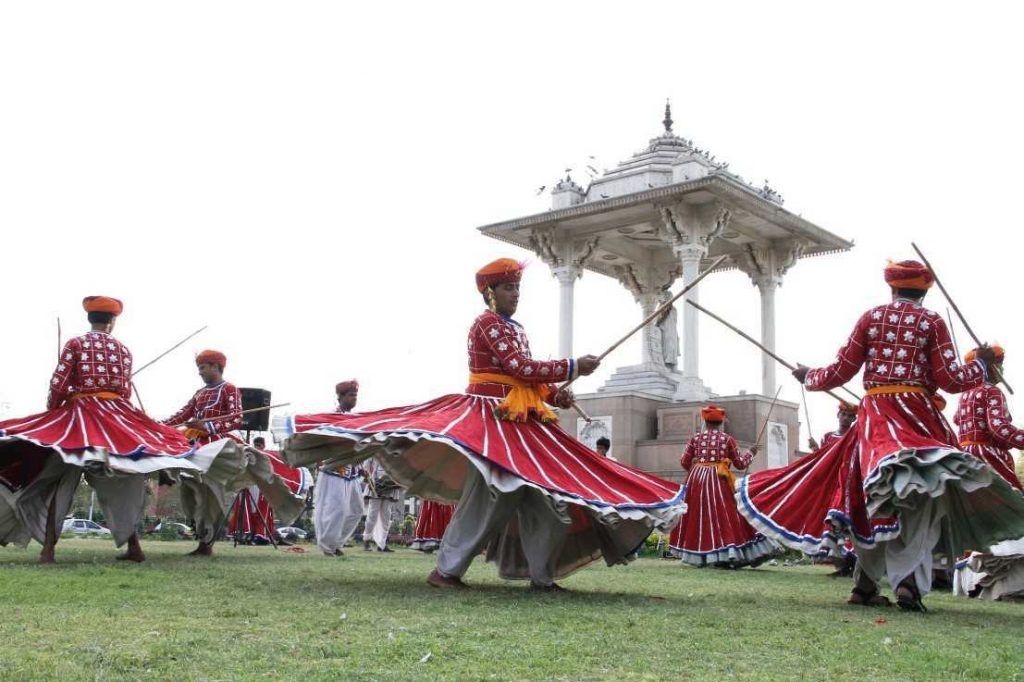
17 – 18 May 2019
The month of June will completely change the atmosphere at Mount Abu, Rajasthan, when the mountain city hosts its annual summer festival.
A rich amalgamation of folk and classical music, this two-day festival will transport you deep into the lives and culture of rural Rajasthan. The audience will be mesmerized by the warmth and joy of the people of this hill station, captured delightfully in this event that gives you a peek into their vivacious lives.
The first day opens with the rendering of a beautiful folk song, immediately followed by lively folk dances. Do not miss the ceremonial procession that winds through the city and culminates at the Nakki Lake Chowk, where most of the cultural performances will be staged. Step away from the cultural hub to watch exciting boat races organized on Nakki Lake. The Sham-e-Qawwali brings together renowned qawwals, or singers, from across the nation for a mesmerizing musical extravaganza.
The second day showcases an entirely different side of the lives of the inhabitants of Rajasthan. The day is abuzz with competitions and activities, such as skating races, boat races, horse races, matka races, tug of war games and the CRPF band show, among countless events that up the excitement fever by several notches.
The grand summer festival comes to an end with a dazzling display of fireworks.
The Mount Abu Summer Festival is one of the more popular fairs of Rajasthan and it attracts tourists from around the world wishing to experience this feast of art and culture. The backdrop, the perfect climate, and the warm hospitality make it one of the best times to visit. Time your trip to Rajasthan around Buddha Poornima and you will be able to partake in the festivities and return with a memorable experience.
Conclusion
To say that India is a land of myriad cultures and a potpourri of experiences would be stating the obvious. Each of these festivals offers a glimpse into the colourful tapestry that is India’s rich heritage and culture. Begin your journey into the past today.
Table of contents
Trending blogs for you
 18002099100
18002099100






